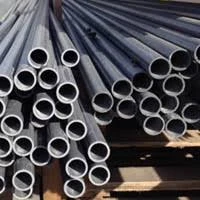
-
 Afrikaans
Afrikaans -
 Albanian
Albanian -
 Amharic
Amharic -
 Arabic
Arabic -
 Armenian
Armenian -
 Azerbaijani
Azerbaijani -
 Basque
Basque -
 Belarusian
Belarusian -
 Bengali
Bengali -
 Bosnian
Bosnian -
 Bulgarian
Bulgarian -
 Catalan
Catalan -
 Cebuano
Cebuano -
 China
China -
 China (Taiwan)
China (Taiwan) -
 Corsican
Corsican -
 Croatian
Croatian -
 Czech
Czech -
 Danish
Danish -
 Dutch
Dutch -
 English
English -
 Esperanto
Esperanto -
 Estonian
Estonian -
 Finnish
Finnish -
 French
French -
 Frisian
Frisian -
 Galician
Galician -
 Georgian
Georgian -
 German
German -
 Greek
Greek -
 Gujarati
Gujarati -
 Haitian Creole
Haitian Creole -
 hausa
hausa -
 hawaiian
hawaiian -
 Hebrew
Hebrew -
 Hindi
Hindi -
 Miao
Miao -
 Hungarian
Hungarian -
 Icelandic
Icelandic -
 igbo
igbo -
 Indonesian
Indonesian -
 irish
irish -
 Italian
Italian -
 Japanese
Japanese -
 Javanese
Javanese -
 Kannada
Kannada -
 kazakh
kazakh -
 Khmer
Khmer -
 Rwandese
Rwandese -
 Korean
Korean -
 Kurdish
Kurdish -
 Kyrgyz
Kyrgyz -
 Lao
Lao -
 Latin
Latin -
 Latvian
Latvian -
 Lithuanian
Lithuanian -
 Luxembourgish
Luxembourgish -
 Macedonian
Macedonian -
 Malgashi
Malgashi -
 Malay
Malay -
 Malayalam
Malayalam -
 Maltese
Maltese -
 Maori
Maori -
 Marathi
Marathi -
 Mongolian
Mongolian -
 Myanmar
Myanmar -
 Nepali
Nepali -
 Norwegian
Norwegian -
 Norwegian
Norwegian -
 Occitan
Occitan -
 Pashto
Pashto -
 Persian
Persian -
 Polish
Polish -
 Portuguese
Portuguese -
 Punjabi
Punjabi -
 Romanian
Romanian -
 Russian
Russian -
 Samoan
Samoan -
 Scottish Gaelic
Scottish Gaelic -
 Serbian
Serbian -
 Sesotho
Sesotho -
 Shona
Shona -
 Sindhi
Sindhi -
 Sinhala
Sinhala -
 Slovak
Slovak -
 Slovenian
Slovenian -
 Somali
Somali -
 Spanish
Spanish -
 Sundanese
Sundanese -
 Swahili
Swahili -
 Swedish
Swedish -
 Tagalog
Tagalog -
 Tajik
Tajik -
 Tamil
Tamil -
 Tatar
Tatar -
 Telugu
Telugu -
 Thai
Thai -
 Turkish
Turkish -
 Turkmen
Turkmen -
 Ukrainian
Ukrainian -
 Urdu
Urdu -
 Uighur
Uighur -
 Uzbek
Uzbek -
 Vietnamese
Vietnamese -
 Welsh
Welsh -
 Bantu
Bantu -
 Yiddish
Yiddish -
 Yoruba
Yoruba -
 Zulu
Zulu
Understanding the Concept and Applications of FRP Weirs in Water Management
Understanding FRP Weirs Advancements in Water Flow Measurement
Water management is an essential component of environmental engineering and hydrology, particularly for areas managing reservoirs, irrigation systems, and flood control measures. Accurate measurement of water flow is critical for effective water resource management. One of the innovative solutions introduced in recent years is the use of Fiber-Reinforced Polymer (FRP) weirs. This article delves into FRP weirs, their benefits, applications, and the implications they have for water management.
What is an FRP Weir?
A weir is a barrier across a river or stream designed to alter the flow characteristics of water. Weirs are typically used for measuring the flow rate of water and controlling water levels. Traditionally crafted from concrete or wood, these structures have evolved with advancements in material technology, leading to the introduction of FRP weirs.
FRP is a composite material made by combining a polymer matrix with reinforcing fibers, usually glass or carbon. This combination results in a lightweight, highly durable, and corrosion-resistant material that is particularly suited for applications in harsh environments.
Advantages of FRP Weirs
1. Corrosion Resistance One of the most significant advantages of using FRP is its resistance to corrosion. Traditional materials like concrete or wood may degrade over time when exposed to water and environmental elements. FRP weirs can withstand the erosive nature of flowing water and remain structurally sound over extended periods, reducing maintenance costs and extending service life.
2. Lightweight FRP weirs are significantly lighter than their concrete counterparts, making them easier to transport, install, and handle. This reduction in weight can lead to lower installation costs and quicker project timelines, which is especially beneficial in remote locations or difficult terrains.
3. Design Flexibility FRP can be easily molded into various shapes and sizes. This flexibility allows engineers and designers to create customized weirs tailored to specific site conditions and operational requirements. Unlike traditional materials, the adaptability of FRP provides opportunities for innovative engineering solutions.
4. Hydraulic Efficiency FRP weirs offer excellent hydraulic characteristics. Their smooth surfaces minimize friction losses, enhancing flow measurement accuracy. Additionally, their ability to integrate with modern instrumentation and monitoring systems adds to their effectiveness in managing water resources.
frp weir

Applications of FRP Weirs
FRP weirs can be utilized in various applications, reflecting the versatility of this technology
- Water Treatment Plants FRP weirs are commonly used in water treatment facilities for flow measurement as part of the process for managing clean water supply and treatment.
- Irrigation Systems In agriculture, accurate flow measurements are critical for irrigation efficiency. FRP weirs can be installed in irrigation canals to measure water delivery and optimize usage.
- Flood Control They play a vital role in flood management systems to monitor water levels and flow rates in real-time, allowing for prompt decision-making in times of adverse weather.
- Environmental Monitoring FRP weirs can be employed in environmental studies to monitor the health of ecosystems and their water flow patterns, contributing valuable data for conservation efforts.
Conclusion
The integration of FRP weirs into water management systems represents a significant advancement in engineering and hydrology. Their corrosion resistance, lightweight nature, design flexibility, and hydraulic efficiency make them a superior choice compared to traditional materials. As our need for efficient and sustainable water management solutions grows, the adoption of innovative materials like FRP will undoubtedly play a critical role in addressing the challenges associated with water resource management.
In summary, FRP weirs are not only a testament to technological progress but also a key asset in promoting more efficient and sustainable practices in water management. Their emergence is a clear indication that the future of water resource engineering will rely increasingly on innovative materials and solutions.









